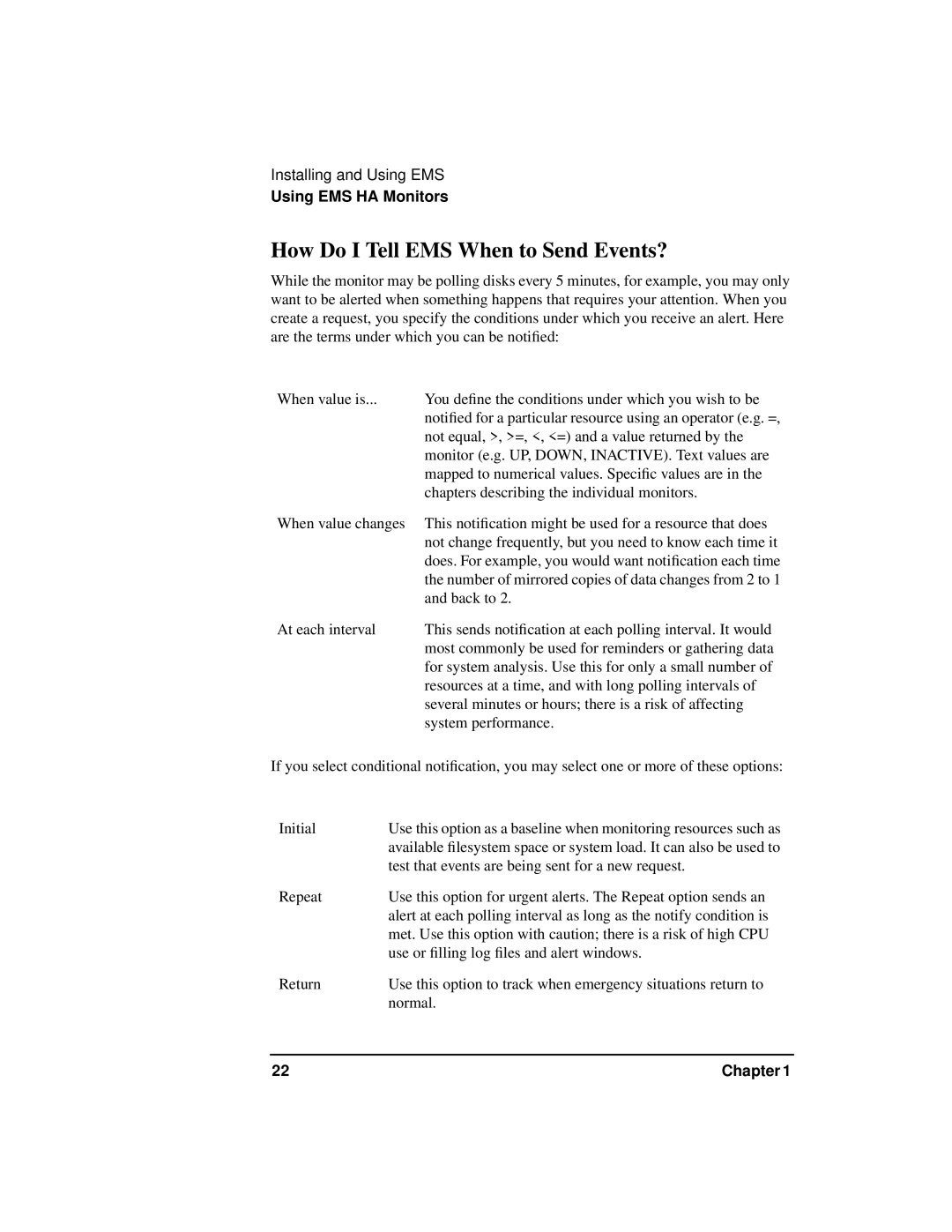Installing and Using EMS
Using EMS HA Monitors
How Do I Tell EMS When to Send Events?
While the monitor may be polling disks every 5 minutes, for example, you may only want to be alerted when something happens that requires your attention. When you create a request, you specify the conditions under which you receive an alert. Here are the terms under which you can be notified:
When value is... | You define the conditions under which you wish to be |
| notified for a particular resource using an operator (e.g. =, |
| not equal, >, >=, <, <=) and a value returned by the |
| monitor (e.g. UP, DOWN, INACTIVE). Text values are |
| mapped to numerical values. Specific values are in the |
| chapters describing the individual monitors. |
When value changes | This notification might be used for a resource that does |
| not change frequently, but you need to know each time it |
| does. For example, you would want notification each time |
| the number of mirrored copies of data changes from 2 to 1 |
| and back to 2. |
At each interval | This sends notification at each polling interval. It would |
| most commonly be used for reminders or gathering data |
| for system analysis. Use this for only a small number of |
| resources at a time, and with long polling intervals of |
| several minutes or hours; there is a risk of affecting |
| system performance. |
If you select conditional notification, you may select one or more of these options:
Initial | Use this option as a baseline when monitoring resources such as |
| available filesystem space or system load. It can also be used to |
| test that events are being sent for a new request. |
Repeat | Use this option for urgent alerts. The Repeat option sends an |
| alert at each polling interval as long as the notify condition is |
| met. Use this option with caution; there is a risk of high CPU |
| use or filling log files and alert windows. |
Return | Use this option to track when emergency situations return to |
| normal. |
22 | Chapter 1 |
